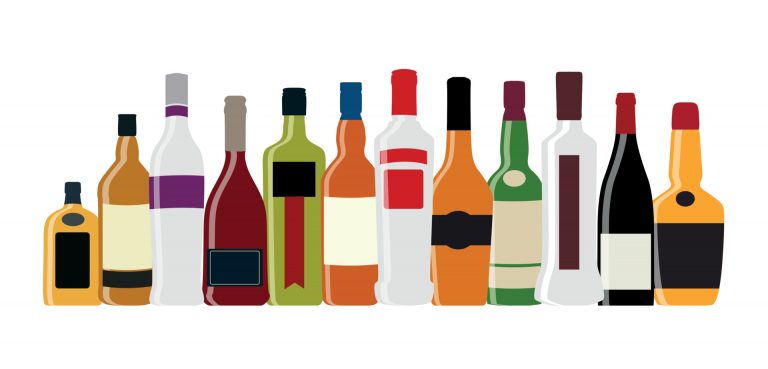While most retailers would on principle agree with the inclusion of glass in the forthcoming Deposit Return Scheme, the practical challenges of collecting and recycling glass remain daunting and potentially insurmountable for the industry in the time remaining before April 2021.
by Antony Begley
With the news that Scotland’s Deposit Return Scheme (DRS) is due to commence on 1 April 2021, it seems increasingly clear that the die has been cast on new legislation that potentially represents the biggest challenge Scotland’s local retailers have faced in many a long year. The draft regulations are subject to a consultation but keen observers of recent consultations will be forgiven for assuming that the findings of that consultation will have very little substantive impact on the final legislation. It will surprise no one if the enacted legislation bears a striking similarity to the Scottish Government’s position from day one.
The only slight concession appears to be the inclusion of a possible exemption for smaller retailers who are in close proximity to other return points, something that the Scottish Grocers’ Federation (SGF) had been pushing for – and warmly welcomes.
But for the SGF, as well as 15 other industry trade bodies, the elephant in the room remains the inclusion of glass within the scheme. Those 16 organisations – including the Scottish Wholesale Association, the Association of Convenience Stores and the Scottish Retail Consortium – recently sent an open letter to Roseanna Cunningham, Cabinet Secretary for Environment, Climate Change and Land Reform, outlining their concerns around the inclusion of glass.
The letter outlined 15 different practical concerns from across the industry landscape including the extra storage space required, manual handling issues, increased capital expenditure and fears over fraud and theft. The letter called on the Scottish Government and MSPs to “exclude glass from the DRS at this stage” and “consider an innovative approach which blends kerbside, EPR [extended producer responsibility] and bottle bank sites to recover the maximum amount of post-consumer glass”.
The Scottish Government has published its draft regulations for how a DRS would work in Scotland. The regulations are still subject to consultation. Some of the key points are as follows:
- Implementation date is 1 April 2021.
- The deposit level will be 20p for all single-use PET bottles, aluminium cans and glass bottles.
- Retailers will be required to operate a return point at premises from which sales of scheme products are made. This includes accepting returns from consumers, and reimbursing and retaining the packaging for collection by or on behalf of producers.
- All containers between 50ml and 3-ltr will be included.
- All retailers who sell single-use drinks containers are included.
- Exemptions may be granted for smaller stores if existing collection facilities exist nearby.
- Failing to implement DRS could result in fines up to £10,000.
- DRS will be operated and run by a ‘scheme administrator’ funded by drinks producers.
- The administrator will be required to hit set targets:
- recovering 70% of packaging in year one
- recovering 80% of packaging in year two
- recovering 90% of packaging in year three.
SWA Chief Executive Colin Smith commented: “We have consistently opposed the inclusion of glass which adds costs, health and safety concerns and logistical complexity to the supply chain for a disproportionate benefit in terms of recycling rates.”
Smith also flagged up several other concerns about the scheme: “A Scotland-only DRS will create a beverage trade border between Scotland and England leading to a restriction on free trade, a need for Scotland-only SKUs, increased warehousing, ICT changes and more complex trading logistics”.
He went on to say a spring 2021 roll-out for DRS was “unachievable” and suggested the Scottish Government learn the lessons from the rushed implementation of the recent Track and Trace tobacco legislation.
At its heart, the debate is reminiscent of so many in the past in that a massively complex issue has been boiled down to what looks like a straightforward moral choice: do you want to save the planet or do you not?
This is typified by a series of studies by Zero Waste Scotland asking consumers, for example, whether they think glass should be included. Entirely unsurprisingly, the vast majority (85%) said they did.
When retailers then highlight the real-world challenges of recycling glass they immediately find themselves on the wrong side of the moral argument, despite the fact that these challenges are – for the most part – entirely legitimate and practical in nature and do not centre on commercial issues.
Retailers find themselves portrayed as putting profits before the planet when all they are doing is flagging up the indisputable challenges that surround the collection and recycling of vast quantities of glass recyclate.
This is broadly the same uncomfortable position that retailers find themselves in when discussing issues like the National Minimum Wage. Do you think staff should be paid a good wage or not?
The Scottish Grocers’ Federation believes that a DRS which includes PET and cans offers a level playing field for small and large retailers. The inclusion of glass, however, would present three key challenges:
1. Only 40% of stores have enough space
High rates of automation (90%+) are critical to the success of DRS systems in other countries. In Norway, DRS automation is 93%, while in Sweden it is 95% and Estonia 94%. Scotland has a high proportion of convenience stores in the retail sector compared to many DRS countries. Reverse vending machines (RVMs) that handle PET and cans start from 0.51sq m footprint and will fit in most Scottish convenience stores. RVMs that also handle glass are minimum 1.02sq m footprint and will not fit in stores under 1,000sq ft, which constitute 60% of Scottish convenience stores.
2. The handling fee for retailers will not cover the cost of taking back glass
The international norm is for the handling fee to be benchmarked on the costs of an ‘average’ store, which is usually a medium-sized supermarket. Given the greater cost-efficiencies of medium-sized stores, convenience retailers will be at a disadvantage. Small retailers in other countries usually accept this marginal gap between handling fee and actual cost as being manageable in a PET and can-only system. But if a DRS includes glass, the costs to smaller stores are significantly more and the gap much wider.
Due to lower rates of automation and the complexity of handling and storing glass, the inclusion of glass in Scotland’s DRS will considerably increase the gap between actual cost of handling and the handling fee received.
3. Including glass will impact independent stores through price inflation
Including glass in Scotland’s DRS would add about £25m to the cost of operating the scheme. Recycled glass is a nearly worthless commodity, with material income of just £5 per tonne compared to PET at £380/tonne and aluminium cans at £1200/tonne, yet it is costly to handle and store. The increased fee for including glass in Scotland’s DRS will inevitably be passed from beverage manufacturers on to consumers in the form of higher prices. This will again be a blow to sales in the independent store sector.
In both these cases, most retailers would agree that staff should be paid a good wage and that glass should be included in DRS – but the unpalatable reality is that there are enormous commercial and practical implications for how these issues are tackled.
“I have absolutely no problem in principle with including glass in a DRS,” says Nisa Bellshill retailer Abdul Majid. “If local retailers can help increase recycling rates across Scotland, that’s fantastic and commendable. The problem I do have, however, is that the infrastructure just doesn’t exist yet to efficiently and safely recycle glass. It’s bulky and potentially dangerous for retailers and we know that there aren’t even enough recycling facilities in Scotland to actually recycle the volume of glass that the scheme will generate.”
Abdul is referring here to comments made by Viridor Recycling Managing Director Paul Brown at a Cross-Party Group meeting at the Scottish Parliament in May when he stated that “glass is not a fit” for the new DRS. Viridor is at present the only company in Scotland with glass recycling facilities. Brown made it clear to MSPs in attendance, including Cabinet Secretary Roseanna Cunningham, that he did not view the inclusion of glass within the new DRS system as “appropriate or practical”.
And it’s the practicality issue that is most relevant here. Wishing to fast-track recycling rates in Scotland is a worthy aim – but the infrastructure must exist to allow that to happen. We can’t simply wish it into existence and make all the seemingly insurmountable problems go away simply because it’s a Good Thing To Do.
In an open letter from 16 trade industry bodies to Roseanna Cunningham, Cabinet Secretary for Environment, Climate Change and Land Reform, an alternative set of more practical solutions was proposed:
- Investigate proposals for a cost-effective alternative glass collection system which would be funded by Extended Producer Responsibility (EPR). A new UK wide EPR system due in 2023 is likely to significantly increase the capital and resource budgets available to Scottish local authorities to invest in better kerbside and bring-back (bottle banks) models as well as in anti-littering campaigns.
- Build on Scotland’s existing kerbside schemes and the new DRS for metal and plastic. This would deliver an easy-to-understand single glass collection system which would boost recycling figures and reduce the demands on consumers. This would also reduce the complexity of the DRS system and therefore decrease costs and streamline the timetable.
- As reverse vending machines have a typical five- to seven-year lifespan, if the alternative approach outlined above didn’t deliver on Scottish Government recycling targets then the DRS could be reviewed and glass could be added as a second phase. This would allow the DRS to be established at less cost and risk to the Scheme Administrators and other key stakeholders including consumers.
Included within the open letter to Cunningham was a set of practical alternative solutions to including glass in April 2021.
These centred around, firstly, investigating proposals for a cost-effective alternative glass collection system to DRS which would be funded by Extended Producer Responsibility (EPR). The letter outlined how a new UK wide EPR system due in 2023 is likely to significantly increase the capital and resource budgets available to Scottish local authorities to invest in better kerbside and bring-back (bottle banks) models as well as in anti-littering campaigns.
This less disruptive approach, said author Dave Dalton, Chief Executive of British Glass, would be to build on Scotland’s existing kerbside schemes and the new DRS for metal and plastic. This, he said, “would deliver an easy to understand single glass collection system which would boost recycling figures and reduce the demands on consumers”.
This approach would also reduce the complexity of the DRS system and therefore decrease costs and streamline the timetable.
Dalton also pointed out that, as reverse vending machines have a typical five- to seven-year lifespan, if the alternative approach outlined above didn’t hit recycling targets then the DRS could be reviewed and glass added as a second phase. This would allow the DRS to be established at less cost and risk to the Scheme Administrators and other key stakeholders including consumers.
“The inclusion of glass will be bad for the scheme overall and for convenience stores in particular,” concludes SGF Head of Public Affairs John Lee. “Glass is heavy, liable to break and takes up considerable space. It will also drastically reduce the number of stores which can use automated take back. The convenience sector needs a united front on saying no to glass.”
The clock is ticking for retailers to have their say. The Scottish Government consultation runs until 10 December and it is vital that retailers make their voices heard. To have your input, visit the online consultation document.





